The Hajj Pilgrimage
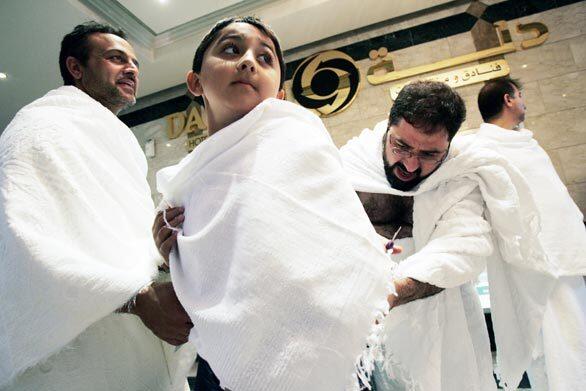
Mohammad Al-Qazwini, right, adjusts Murtaza Sakha’s ihram robes before their group leaves Medina on the journey to Mecca. Murtaza, 9, has a debilitating condition that makes it almost impossible for him to walk. His father, Mustafa Sakha, 38, left, took the boy on the hajj in the hope that it would cure him. (Irfan Khan / Los Angeles Times)
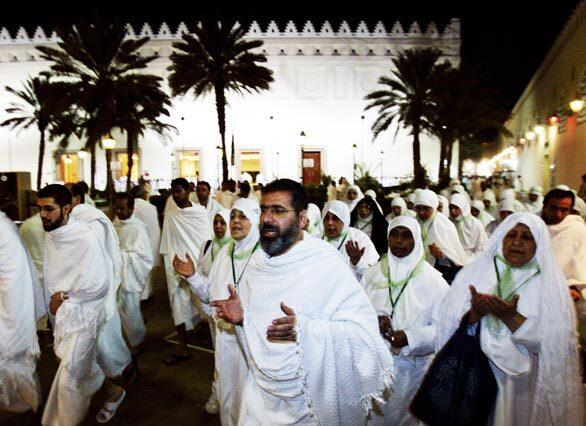
Imam Moustafa Al-Qazwini of the Islamic Educational Center in Costa Mesa leads his group of California pilgrims out of the Masjid Al Shajara mosque just outside Medina. They had just completed their declaration of intent to perform the hajj. (Irfan Khan / Los Angeles Times)
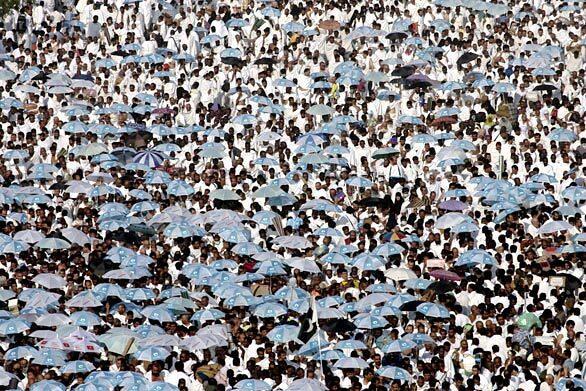
Millions of Muslims from all over the world start gathering in the plains of Arafat to mark the beginning of the hajj. The day of Arafat depicts the gathering of mankind to await judgment. (Irfan Khan / Los Angeles Times)
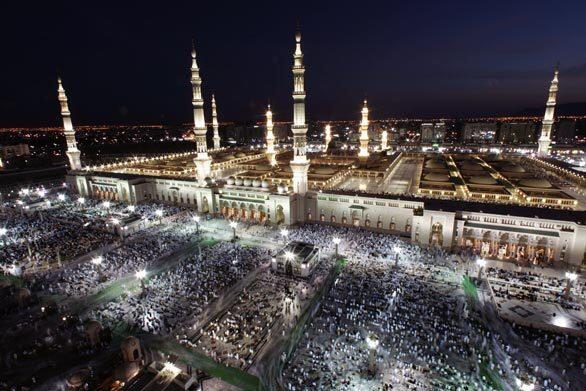
Before the hajj, millions of Muslims visit the Mosque of the Prophet in Medina, which holds Muhammad’s tomb. (Irfan Khan / Los Angeles Times)
Advertisement
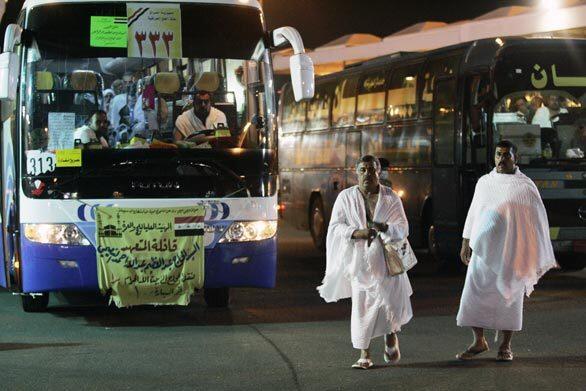
Pilgrims taking buses to Mecca stop outside the city for passport checks. (Irfan Khan / Los Angeles Times)
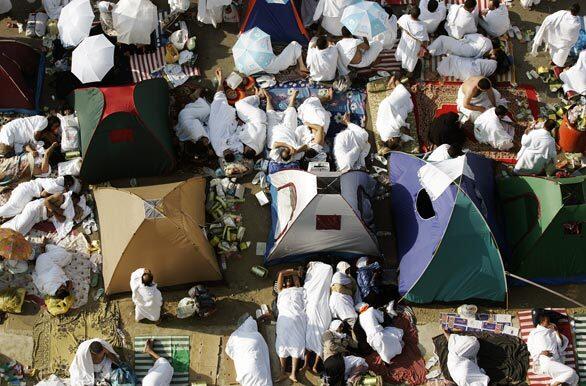
Sleeping when they can and using small tents as shelter from the scorching sun, pilgrims gather to start the hajj. Muslims spend an entire day in Arafat. (Irfan Khan / Los Angeles Times)
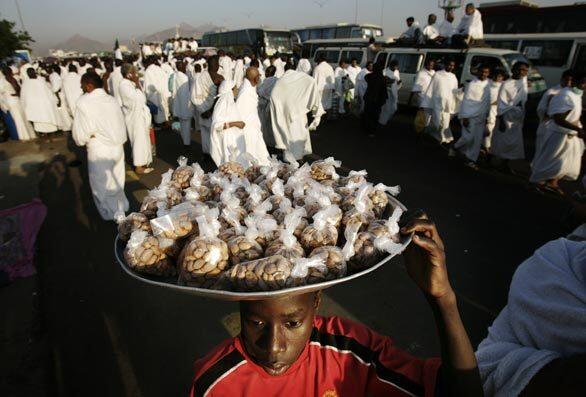
A vendor sells bags of dates to pilgrims gathered at Arafat. (Irfan Khan / Los Angeles Times)
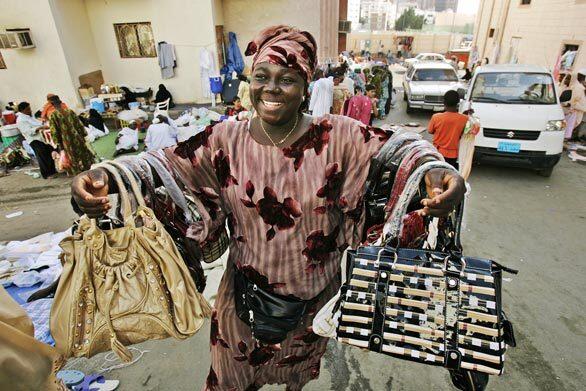
Commerce coexists with religion at Mecca, where pilgrims can shop at bazarrs set up in the city’s back alleys. (Irfan Khan / Los Angeles Times)
Advertisement
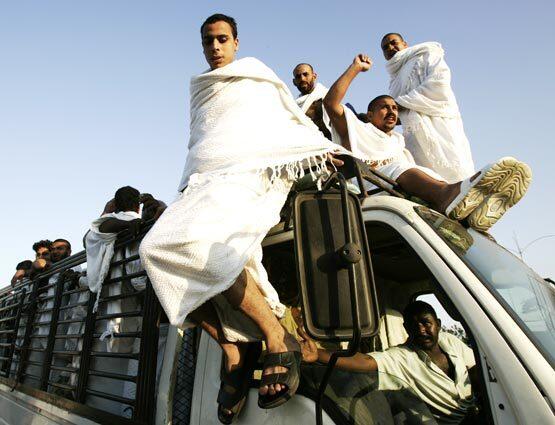
Pilgrims perch on tops and sides of buses headed for Muzdalifa to gather pebbles for the Stoning of the Devil, considered the most dangerous part of the hajj. (Irfan Khan / Los Angeles Times)
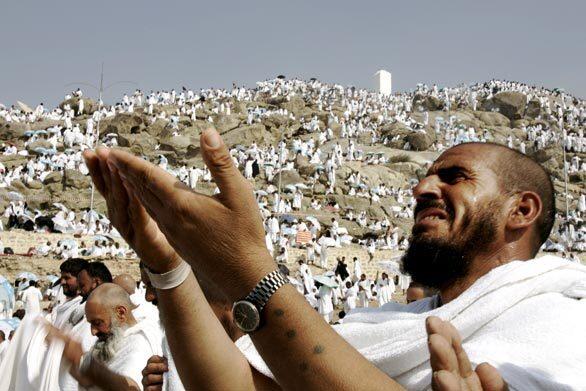
During the noon-to-sunset vigil on Mt. Arafat, the centerpiece of the hajj, a pilgrim surrounded by a million others prays directly to God confessing sins, asking forgiveness and seeking a clean slate for the future. (Irfan Khan / Los Angeles Times)
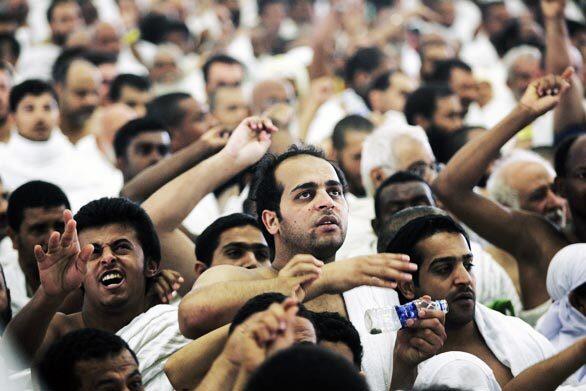
At Mina, pilgrims throw stones at three walls that represent Satan. The ritual is based on the tale of Abraham throwing stones to ward off Satan. (Irfan Khan / Los Angeles Times)
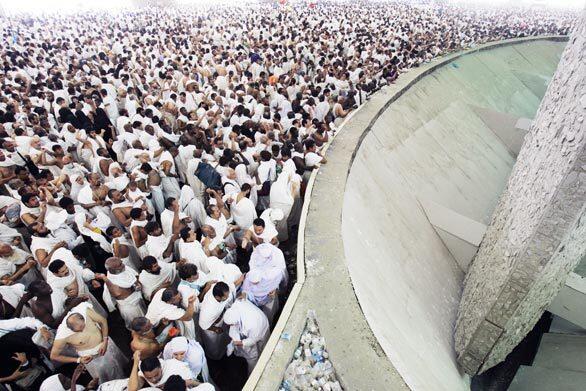
Mina becomes a place of chaos that many pilgrims dread. It’s dangerous because millions of people try to perform the same rite -- throwing stones at walls representing Satan -- at the same time. Because the peril is so widely known, the Costa Mesa pilgrims made wills before leaving home. (Irfan Khan / Los Angeles Times)
Advertisement
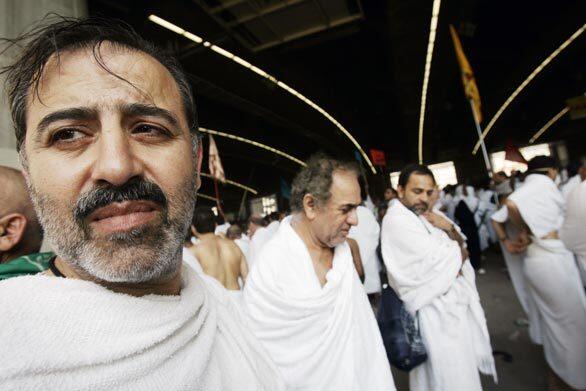
An exhausted and disheveled Raef Hajjali of Altadena emerges from the Stoning of the Devil ritual at Mina. His wife, Ellen, was stuck on a bus hours away. (Irfan Khan / Los Angeles Times)
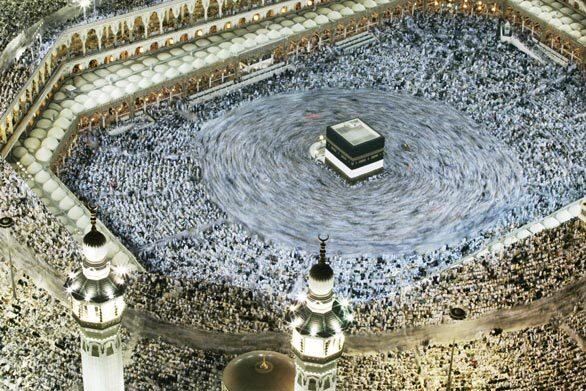
Wearing white robes and often adding bits of color so family members can find one another, millions of pilgrims walk counterclockwise around the Kaaba seven times, in ever-tightening circles. (Irfan Khan / Los Angeles Times)
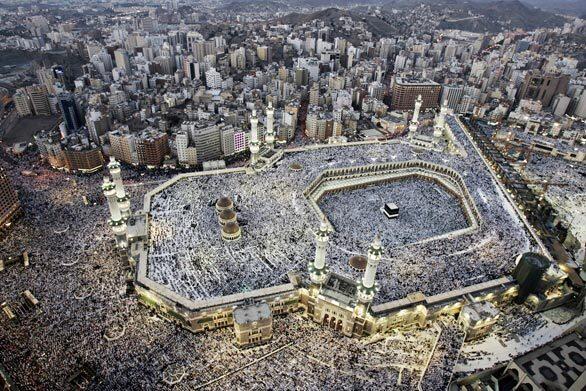
Pilgrims from all over the world fill the three levels of Mecca’s Grand Mosque for prayers at sunset in the days before the hajj. The black cube-shaped building in the mosque is the Kaaba, built by the prophet Abraham. (Irfan Khan / Los Angeles Times)
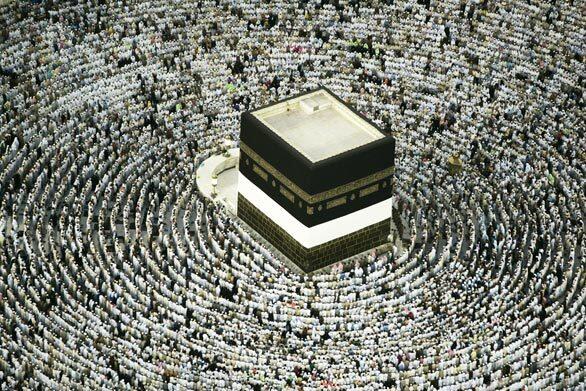
Muslim pilgrims from all over the world crowd into the three levels of Mecca’s Grand Mosque, which surrounds the black cube-like Kaaba, the holiest site in Islam. (Irfan Khan / Los Angeles Times)
Advertisement

After they complete the hajj, joyful men have their heads shaved, a sign of starting afresh in life. Ramadan Al Mutwali Al Zuheri, 30, clips the hair of his friend Emad Ali, 25. (Irfan Khan / Los Angeles Times)
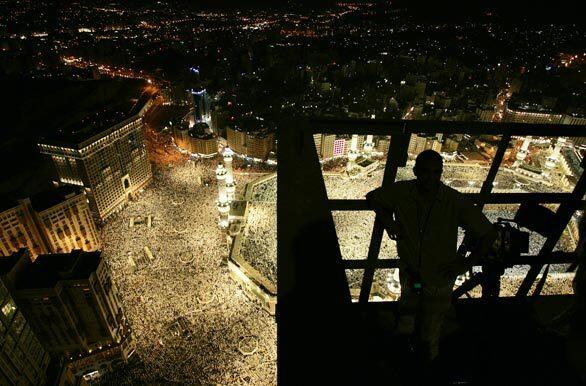
Inside the mosque, millions of pilgrims endure crushing conditions to perform seven revolutions around the Kaaba, where Muhammad performed the hajj in 632. (Irfan Khan / Los Angeles Times)







